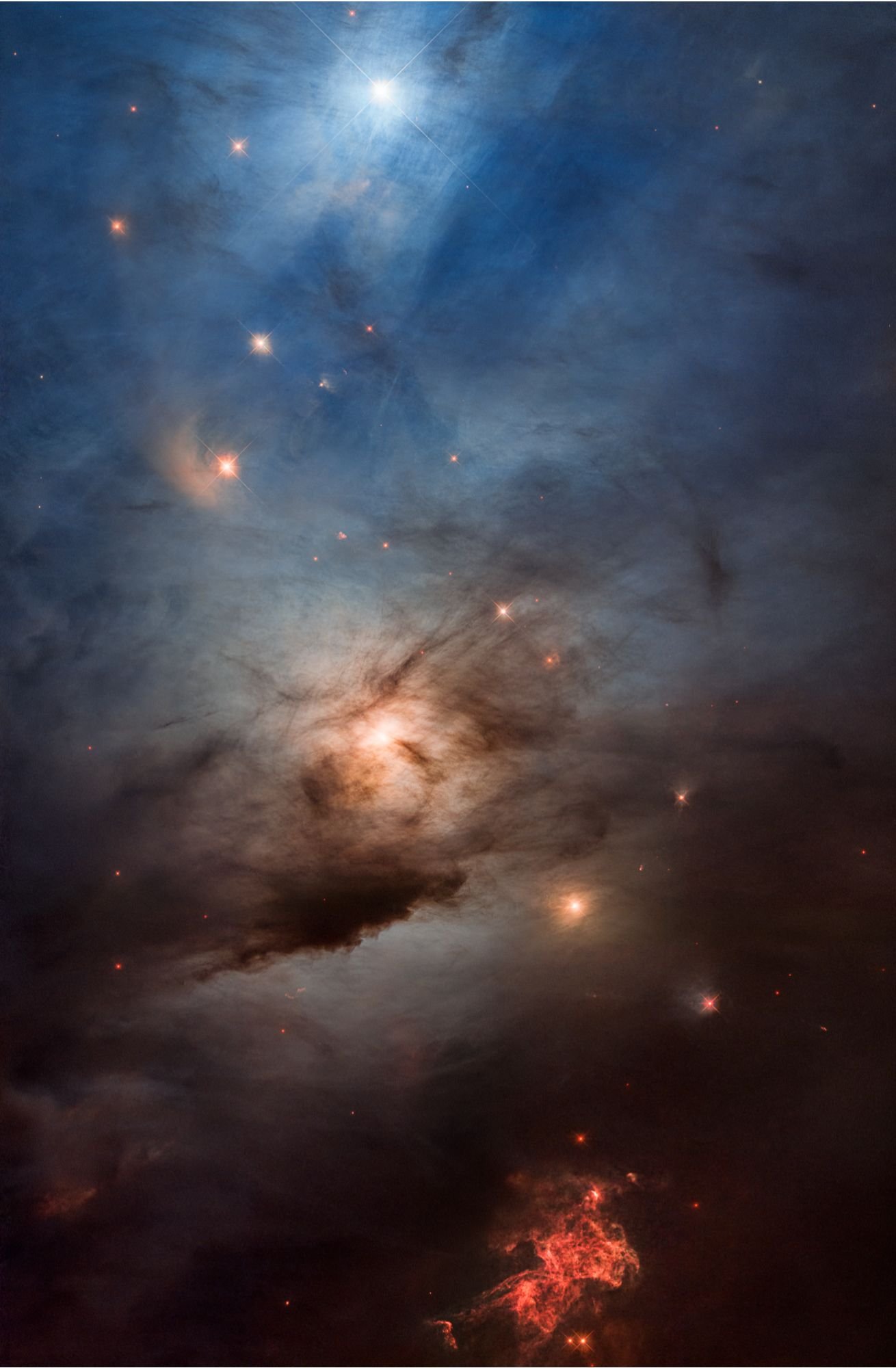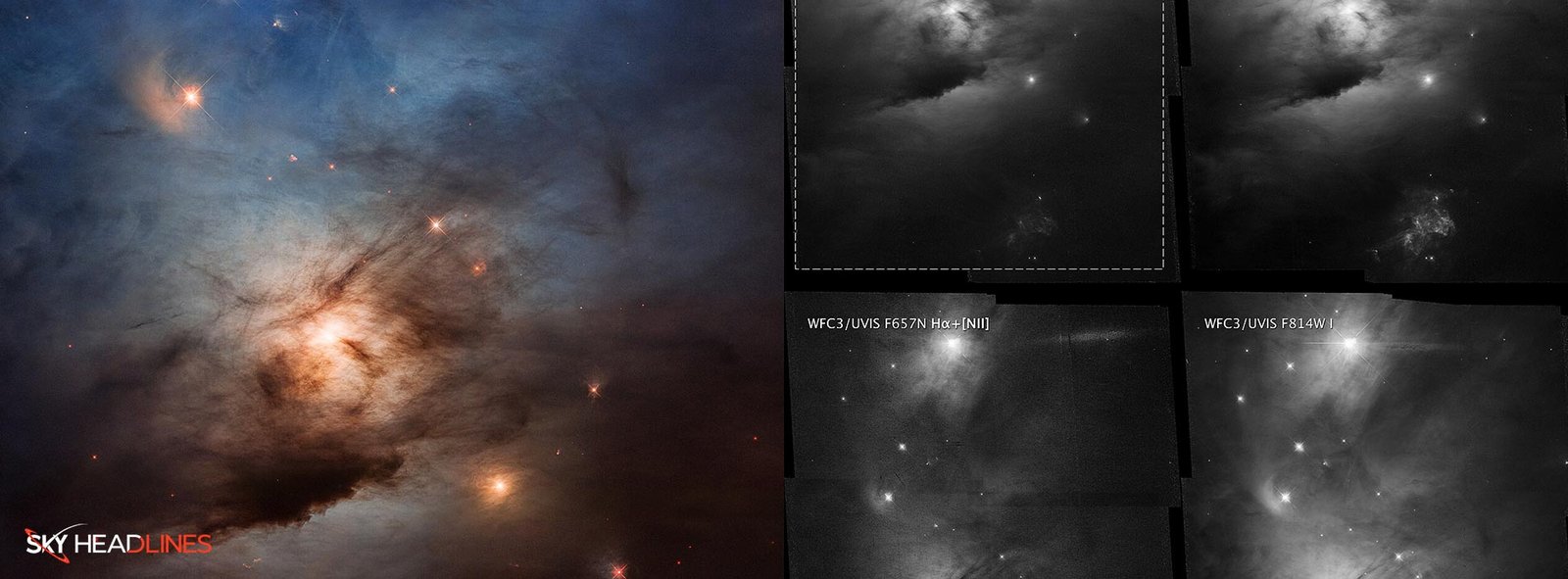Astronomers have published stunning photographs of the nearby star-forming area NGC 1333 taken by NASA’s Hubble Space Telescope in honor of the telescope’s 33rd birthday. These images demonstrate the telescope’s extraordinary capabilities. The Hubble 33rd anniversary images offer an incredible view of the cosmic womb where new stars form. The nebula is located in the Perseus molecular cloud, which is about 960 light-years away.

The ultraviolet and near-infrared imaging capabilities of the Hubble Space Telescope reveal a vibrant picture of a bubbling pot of incandescent gasses and pitch-black dust being pushed and stirred by hundreds of newborn stars. Hubble’s limited view is because the Nearby Star forming firestorm is obscured by denser clouds of fine dust (basically soot) near the image’s bottom. The image’s blackness is not due to a lack of contrast but rather to dust particles.
Now we should be elaborating,
How Hubble’s Ultraviolet and Infrared Imaging Unveils the Inner Workings of Nearby Star Forming Regions?
To take this image, Hubble images through the dust at the edge of a massive cloud of cold molecular hydrogen, the raw material for creating new stars and planets in the unrelenting grip of gravity. This picture illustrates how chaotic our cosmos can be and how star formation is difficult.
Strong stellar winds are ripping through a dusty veil, most likely coming from the blue star at the image’s top. Blue light from the stars is diffused by the tiny dust.
One may see a second, brighter, super-hot star farther down, beaming through hazy dust filaments like the Sun through a patchwork of clouds. Dust is filtering starlight, enabling more of the red spectrum to pass through, giving a diagonal string of fainter companion stars a reddish appearance.
You may see a small window into the dark nebula at the bottom of the image. Hubble captures the crimson glow of ionized hydrogen. It’s like BOOM BOOM BOOM! So many fireworks all at the same time! Newly formed stars beyond the field of view are responsible for this phenomenon by sending out pencil-thin jets. These stars have tremendous magnetic fields that send out two parallel beams of hot gas into space, resembling a double lightsaber from science fiction movies, and circumstellar disks, which may one day form planetary systems. They use laser light shows to trace patterns onto the hydrogen cocoon, which they then sculpt. If a star has jets, it means that it has just been born.
Finally, we should be discussing,
Our Solar System’s Origins and Hubble’s Role in Astronomy:
4.6 billion years ago, our Sun and planets originated inside a dusty molecular cloud like the one depicted here. Our Sun did not begin in a vacuum; it was part of a mosh pit of frenetic star birth, maybe more powerful and massive than NGC 1333.
On April 25, 1990, astronauts on-board the Space Shuttle Discovery from NASA released Hubble into Earth orbit. The renowned telescope has made around 1.6 million observations of nearly 52,000 astronomical objects so far. Located in Baltimore, Maryland, the Space Telescope Science Institute houses the Mikulski Archive for Space Telescopes, which serves as a repository for a vast amount of astronomical data.





